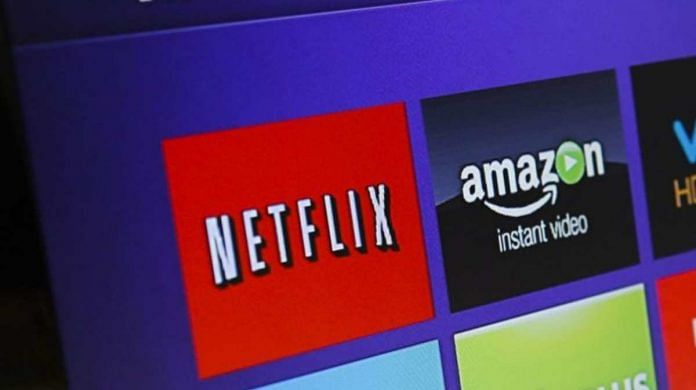New Delhi: The Ministry of Information and Broadcasting (I&B) has sought information from digital news websites and video streaming platforms, and released pro formas for the publishers to release the information.
In a public notice issued Wednesday, the I&B ministry said the information has to be furnished under Rule 18 of the Information Technology (Intermediary Guidelines and Digital Media Ethics Code) Rules, 2021, which were announced by the Narendra Modi government in February this year. This is the government’s first step towards implementing the new rules. The information has to be furnished within 15 days of the publication of the notice.
Industry sources from OTT platforms told ThePrint that there has been no movement since the rules were announced in February, except some consultations with the ministry.
However, a day after the notice was issued, the Indian Broadcasting Foundation (IBF) Thursday stated that it will rename itself as Indian Broadcasting and Digital Foundation (IBDF) to expand its purview to include OTT platforms.
The industry body will also form a self regulatory body called Digital Media Content Regulatory Council (DMCRC), to meet the requirements of the digital media rules. This will be similar to the Broadcast Content Complaint Council (BCCC) for the linear broadcasting (traditional, preset programming) sector that has been functioning under the IBF since 2011.
The ministry said in the notice around 60 publishers and their associations have informed the ministry that they have already initiated the process of forming self-regulatory bodies, as mandated by the rules.
It also said there is no requirement of prior registration of digital media publishers with the ministry, but the rules would require them to furnish certain information about their businesses.
Also read: Run info campaign so viewers know digital media rules, make informed choice: Panel of MPs
What information has been sought?
In Wednesday’s notice, the I&B ministry has released three forms — one for print or television news media that also have a separate digital arm, the second for digital-only news publications, and the third for OTT platforms like Netflix, Amazon Prime and Disney+ Hotstar, among others.
From the digital arms of print and television media organisations, the government has sought basic information such as the title, the language in which it is published, the website URL, mobile apps and social media accounts. It has also sought to know the name of the entity, Registrar of Newspapers for India registration number or relevant details of TV channels which have been given the licence to operate by the ministry.
It has also asked for details of the companies’ grievance redressal officers in India, the name of the self-regulating body of which the publisher is a member, and particulars of news editors, aside from other contact details.
For digital-only media outlets, additional information has been sought, such as the board of directors, the company identification number, month and year of incorporation, and commencement of operations as a digital news publisher.
The details sought from OTTs are the same as digital news publishers, except additional information on the country of registration for foreign entities.
The public notice states that in case of any change in the details furnished to the ministry, it should be informed within the next 30 days.
Why separate forms for print/TV and digital-only
The reason why the ministry has issued separate forms for print/TV companies with online arms and digital-only publications is that newspapers are registered under the Press and Registration of Books Act, 1867, and television channels operate under uplinking and downlinking guidelines of 2011.
In March, representatives of multiple print and TV news organisations met I&B minister Prakash Javadekar and demanded their e-papers and websites be kept out of the ambit of the new rules for digital media.
Javadekar had then said he had “noted” the suggestions.
In the same month, video-streaming platforms such as Alt Balaji, Netflix and Amazon Prime also met Javadekar and stressed on the need for insulation from FIRs and complaints in the backdrop of the grievance redressal mechanism they would need to set up under the new rules.
The new rules brought in in February had mandated both video streaming platforms and online news media set up a three-tier grievance redressal mechanism — self-regulation by publishers, a self-regulating body headed by a retired Supreme Court or high court judge, and an inter-ministerial committee to be formed by the government — to look at specific complaints and recommend action against the violation.
Since then, the I&B ministry has held a few consultations with some news media platforms and video streaming platforms.
(Edited by Shreyas Sharma)
Also read: The meaning of govt’s new IT rules for OTT, digital media & the serious concerns they raise






